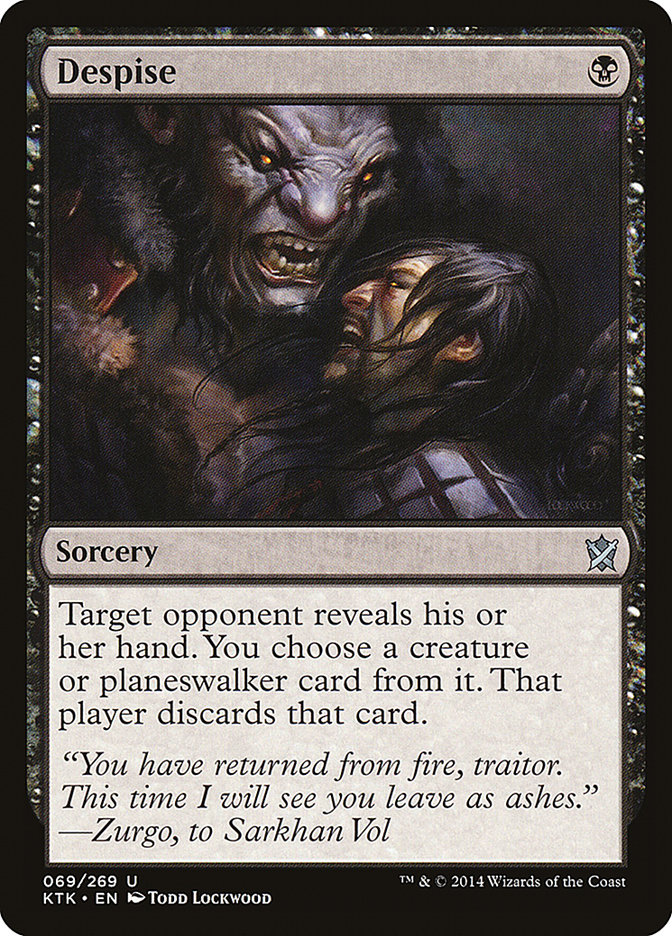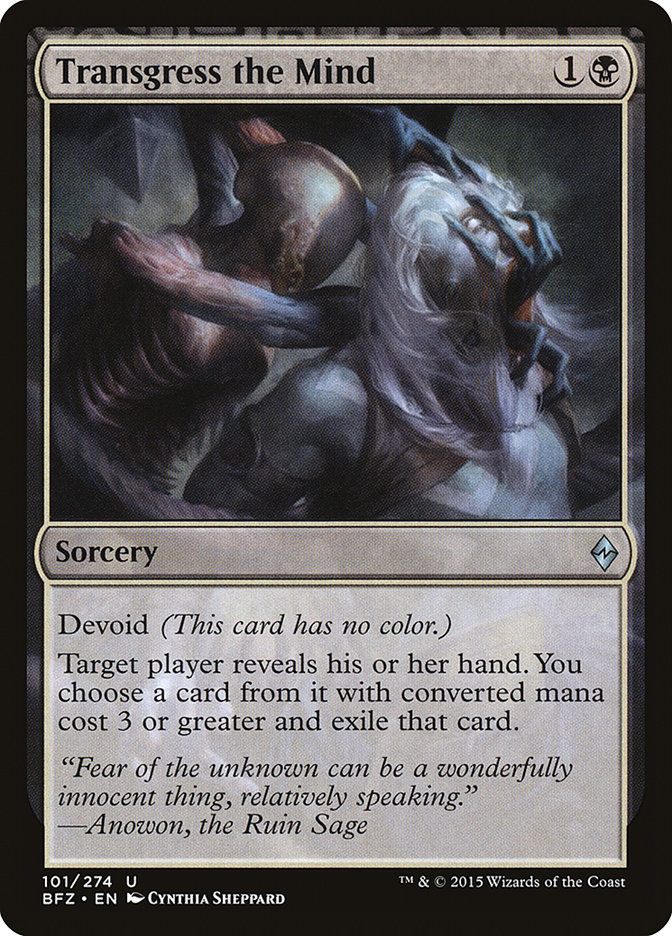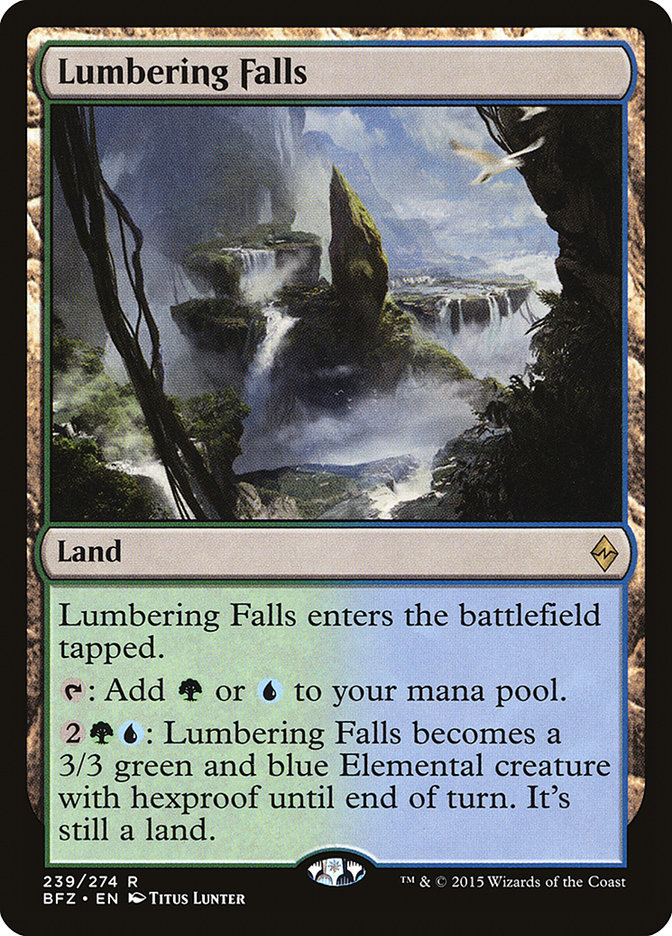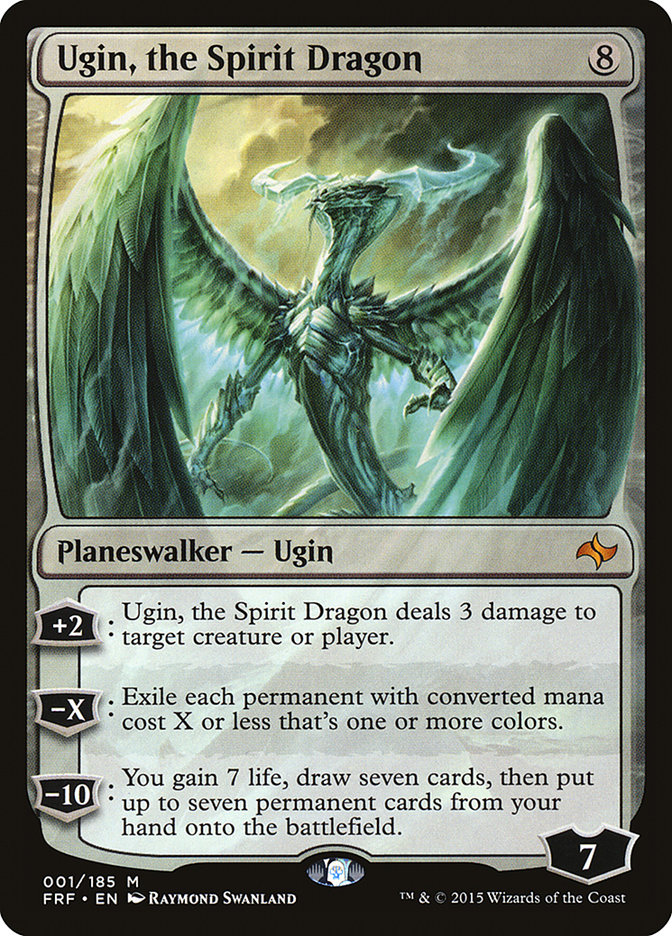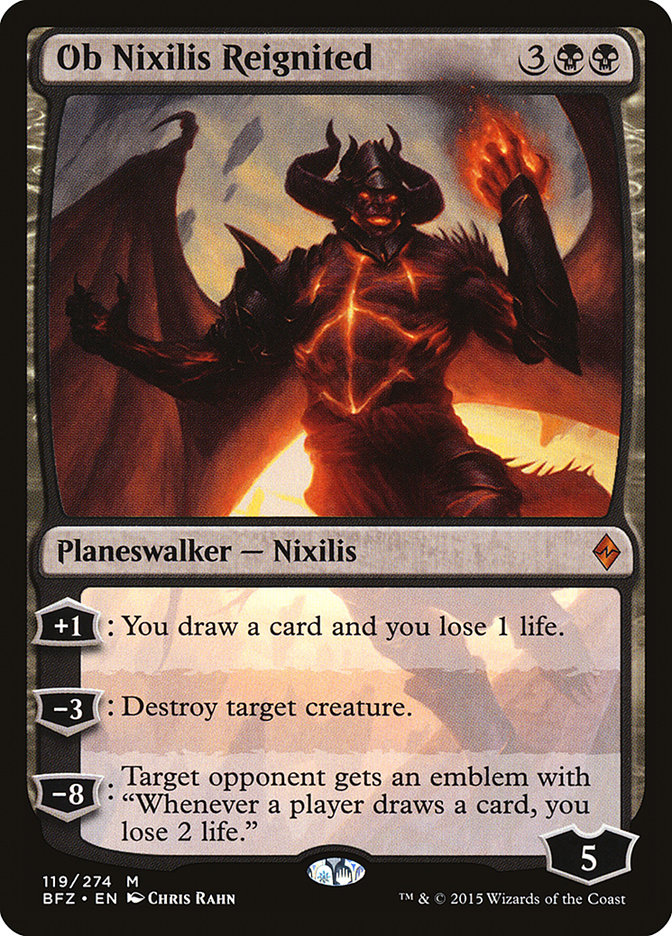Last weekend I played in the Open Series in Worcester. I didn’t end up doing as well as I had hoped, but I can’t complain too much after being fortunate
enough to top 8 the Season Three Invitational just two weeks before. If you subscribe to the StarCityGames newsletter, then you’ve already seen my new decklist for Esper Dragons. If you
aren’t subscribed to the newsletter, then you should change that right now! It’s free and contains a ton of useful information about events and promotions
run by StarCityGames. The past few newsletters have also contained an updated decklist from yours truly. If you’re playing in a Standard event this
weekend, then I would recommend my updated Esper Dragons list from the newsletter, but that’s not what I’m here to talk about today. Today I want to
discuss the new Standard format with Battle for Zendikar.
Here is a rough draft of the current Sutlai deck that I’m working on in preparation for the new format;
Creatures (10)
- 1 Tasigur, the Golden Fang
- 2 Den Protector
- 4 Jace, Vryn's Prodigy
- 2 Nissa, Vastwood Seer
- 1 Greenwarden of Murasa
Planeswalkers (5)
Lands (26)
Spells (19)

I haven’t included a sideboard yet, because the format is far from being established so I think it’s best to spend time working on the maindeck right now.
I think that Sultai Control is in a good position after the rotation of Theros block & Magic 2015, as it doesn’t lose too much from
the rotation. Decks rarely survive rotation with all of their cards though, and Sultai does take one pretty big hit with the loss of Thoughtseize.
Thoughtseize was a staple of the format both when it was originally printed in Lorwyn, and again when it was reprinted in Theros. In
Sultai Control, it allowed for us to have a cheap answer to a large range of threats. I’ve started looking at the replacement discard spells that we have
at our disposal, but the options are much more specific than before. At one mana, we have Duress and Despise. These two discard spells act like foils in a
sense since one largely targets creatures while the other is used against non-creature spells. It’s also interesting to note that normally Duress would be
able to get any planeswalker, but the Magic Origins planeswalkers like Jace and Nissa start as creatures, and therefore, can’t be hit. I expect
Jace and Nissa to each have a huge presence in the new format, which is part of the reason I’m currently playing more copies of Despise than Duress.
Transgress the Mind is another new discard option, but I think that it’s more of a sideboard card right now. That card is likely at its best against a deck
like the Abzan Control strategies from the past year. Unfortunately, it still costs two mana, which is a huge liability in a deck full of lands that enter
the battlefield tapped. It’s possible that Transgress the Mind could be a role-player in the new format, but for now, I’m sticking with a mix of Despise
and Duress.
The other major loss for Sultai Control, and other control decks, is the loss of the Temples. When the Temples were first spoiled in Theros, most
people thought that Scry 1 wasn’t powerful enough to warrant running them, but as we learned, they couldn’t have been more wrong. The Temples were all huge
role players in countless different decks over the last two years, and they will definitely be missed in Sultai Control. The manabases of decks in the new
format are actually super interesting since the Battle lands from Battle for Zendikar have an obvious synergy with the allied fetchlands from Khans of Tarkir. This is actually the first time in history that players are able to use fetchlands to get untapped lands with multiple basic
types in Standard. I think that a lot of the decks in the new format are going to revolve around this interaction, and fetchlands will be huge as a result.
In Sultai in particular, the interaction has less of an impact since the Sultai shard only has one allied color combination in U/B. Shards that share two
allied colors will have access to two separate Battle lands and fetchlands, and much of their manabase will be filled with those cards. A perfect example
of this is an Esper Control deck that is able to play all of the mana fixing from both U/W and U/B (Shaheen Soorani actually recently wrote about the Esper
manabase in an article earlier this month). In Sultai
Control, however, we only have access to one allied combination in U/B. I choose to play a full set of Polluted Delta and three copies of Sunken Hollow,
and I think this might be the right numbers on these, but I could be wrong. If you look at the manabase, you’ll also see that we’re still playing four
copies of Opulent Palace. Lands entering the battlefield tapped is a cost, but we can’t really ask for a land to do much more than fixing all of our
colors.
The last new addition to the manabase is Lumbering Falls. The allied creature-lands from Worldwake had a major impact on both Standard and Modern,
and I am expecting the same from the enemy ones. Only two have been spoiled at the time I am writing this article, but I think they’re both good so far. A
lot of Magic players seem to think Lumbering Falls isn’t powerful, but I think it’s a great role-player that’s perfect for Sultai Control. It may just
attack as a Hill Giant, but hexproof guarantees that our opponents can’t deal with it with any type of removal. I’m assuming that we won’t see the other
three creature-lands until Oath of the Gatewatch, but I’m eager to see what the abilities are on the B/G version.
Sultai may be losing selection in the loss of the Temples, but I think we’re gaining a serious threat in Lumbering Falls, and I think Evolving Wilds will
do a nice job of rounding things out. The main reason for its inclusion is to help power out our delve spells, but it’s also a fetchland effect that gives
us access to all three of our colors. Overall I am going to start with 26 lands and see if I want more or less after doing more testing.
The core of the creature base is built around Jace and Nissa. Jace is a card that a lot of people undervalued at first, but it is quickly becoming a
powerhouse in Standard and might currently be the best card in the format. Jace’s ability also helps us quickly pay for our expensive delve spells. I’m
only running two copies of Nissa right now, but that’s mainly because of how few Forests we’re able to fit into the deck. It’s possible we might want to
play three copies, but I’m only trying two right now. Even though these are both creatures, they’re really just more planeswalkers that add to our squad of
planeswalkers from the new set. The rest of the creatures include a copy of both Tasigur and two Den Protectors. Den Protector has been a staple of the
format since Dragons of Tarkir was released, and I have been running at least one in a lot of my recent decks. Running two copies allows us to
have a unique effect late in the game, and it also has great synergy with Jace’s Merfolk Looter impression. Den Protector also works very well with Kiora,
Master of the Depths.
Greenwarden of Murasa is a new card from Battle for Zendikar, and I think that it has a lot of potential. For six mana we get a big body and the
same powerful Regrowth effect that Den Protector gives us. The ability to return a second card when it dies is honestly just icing on the cake. I’m trying
out just one right now. Early on in testing a new deck I will often try out a few copies of a lot of similar cards so that I can see which plays out the
best. There is a chance that it turns out that it’s not right for this deck, but I definitely want to try it out.
In addition to the flip planeswalkers from Magic Origins, I’m also playing a copy of Ugin, the Spirit Dragon. Ugin is an insanely powerful effect,
but it costs too much to justify running more than one copy in the maindeck. I’m a little concerned that Ugin will become much worse with Eldrazi in the
format, but I still think it’s nice to have for now unless the format becomes too fast for him. Battle for Zendikar also gives us two great new
toys in Ob Nixilis Reignited and Kiora, Master of the Depths. I’m currently trying out two copies of each, but I think it’s possible I might go up to three
copies of Ob Nixilis. On an empty board, Ob Nixilis provides us with a controlled Phyrexian Arena effect, and its negative ability is great at defending
itself. I’m not 100% sure how good the ultimate is, but I think the ultimate along with the other two abilities are very powerful. Kiora, on the other
hand, is mainly included for her -2 ability. This ability is likely to find you at least a card (most likely two if you’re running hot that day!) while
also filling up your graveyard with cards for your delve spells and Den Protectors. The ultimate on Kiora is also a great option, but the main reason I’ve
included in the deck is for the synergistic -2 ability.
The spells that round out the list are mainly different types of interactive spells. I’ve continued to run three copies of Sultai Charm in addition to four
copies of Dig Through Time. Dig Through Time is one of the most powerful cards in Standard, and it’s already banned in Modern. When a card is good enough
to warrant being banned in one format, it’s definitely not the worst idea in the world to play it where you can. There is a chance that I want a mix
between Dig and Treasure Cruise, so that is something to try out. Sultai Charm gives us a powerful modal spell that at worst lets us filter through our
deck and fill up our graveyard. The other spell I’m running four copies of is Ruinous Path. With Hero’s Downfall rotating out with Theros block, I
think it’s likely that Ruinous Path will step up to fill in that role. The major difference between the two is that Hero’s Downfall has the benefit of
being an instant, while Ruinous Path has Awaken 4. The major downside of playing Ruinous Path in Sultai Control is that you often want to keep your mana
open on your opponents turn. Regardless of which is better, Ruinous Path is very powerful and playing less than four right now seems like a tough thing to
do with all the powerful creatures and planeswalkers in the format. The Awaken ability also gives us a way to use our mana in the lategame and potentially
mitigate flood.
I haven’t included a sideboard because the list is still quite fluid. The full spoiler is not yet out, although I believe it will be by the time this
article is published. There are still a lot of cards from Battle for Zendikar that haven’t been spoiled yet, and I’m hoping that there’s another
role player for Sultai lurking in the set. Currently, the cards I would consider for inclusion in the sideboard are Negate, Disdainful Stroke, Duress,
Languish, and Feed the Clan. Duress is the type of card that is very powerful in the right matchup, and I expect there to be a few powerful control decks
in the new format, so I want to possibly have access to a full four copies of Duress after sideboard. Feed the Clan is a powerful effect that I’ve included
in a few of my sideboards in the past, and I don’t see any reason to stop now. I’m running less creatures with four power in this specific list, but the
card is still powerful enough against very aggressive strategies, and I would make sure that I would have more four power creatures in the sideboard.
Overall, I am very excited for the new Standard environment, and I can’t wait to see what other cards are in the set. I currently think Ob Nixilis
Reignited and Kiora, Master of the Depths are the biggest reasons to play Sultai, but make sure you keep an eye out for other Sultai cards as they get
spoiled. With that said, don’t just look out for Sultai cards because some cards from previous sets might get better depending on what new cards get
released and how the metagame will shape up.
I want to hear from you when it comes to this new Sultai brew. Do you like the list so far, or is there anything you would change? Should I run early drops
such as Hangarback Walker and Rattleclaw Mystic to make better use of Kiora? Did I miss something obvious? Chime in and let’s get to work on making Sultai
the best deck in Battle For Zendikar Standard!

